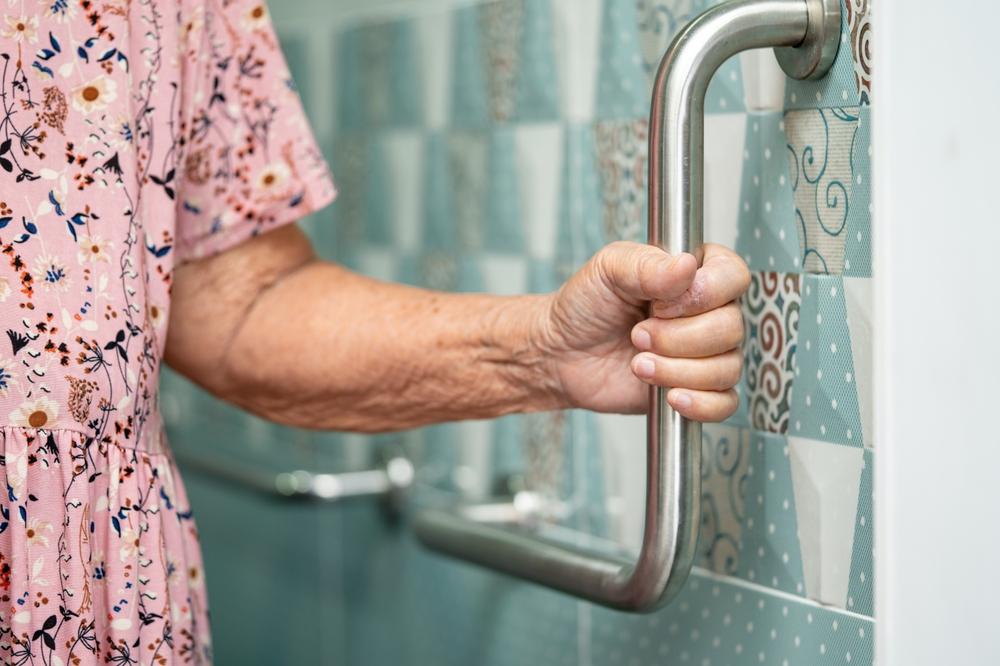Hospital Readmission and
Discharge Safety Handbook
Leaving the hospital after a serious event can be daunting, especially if you’re not quite ready to deal with necessary changes.
We’ve gathered some common questions and resources about how best to avoid hospital readmission. Continue reading to learn more, or find specific answers and articles below:
Table of Contents
Common questions

What is Hospital Readmission?
Hospital Readmission occurs when you have to return to the hospital within 30 days of your discharge. This often triggers extra costs on top of the already needed care, making it an even larger burden than originally anticipated.
Making sure you leave the hospital on the right foot is a great starting place for ensuring future success, but there’s often more to the issue. Our resources will help you stay educated and prepared for how to best tackle your hospital discharge and avoiding readmission.
How do I avoid Hospital Readmission?
Taking the proper steps for your health and rehabilitation is key for finding success after your discharge.
While they may seem like optional items at first, rehab and in-home care are key players in a full recovery, especially when an early discharge or a long stay has hindered your mobility. Carefully consider your situation, and always be open to in-home care and rehabilitation options that are brought up by your family, friends, and healthcare professionals.
This can even be an opportunity to come out stronger than when you first entered the hospital!
How do I get discharged from the hospital safely?
Safe discharge is often defined by the success of your treatment, but the timeline and criteria to determine that success go further than your initial recovery. When you are ready to leave, it is very important to have a discharge plan in place so that your transition back to regular activities is as smooth as possible!
In short, a discharge plan is a holistic summary from the hospital of all follow-up care, appointments, and medications needed.
Hospitals are required by Medicare to provide discharge planning for inpatients when necessary. The loved ones of patients can take an active role in discharge planning by choosing the best home care solutions.
Your discharge planning can have a huge impact on your long-term success, and both parties should be on the same page when it comes to the success of your primary hospital treatment. While not every hospital is the same in its criteria for discharge, there a lot of similarities that can be pulled out.
Checklist for ensuring a safe hospital discharge
-
Understanding Reason for Hospitalization
How did you end up in the hospital in the first place? While all hospitalized conditions are serious, there is a wide variance in the long-term risks of your injury or illness. For example, a stroke needs more attentive care than a broken bone and requires more inpatient care. Ask your doctor for the average length of stay for someone in your condition and compare that with what makes your case unique!
-
Considering the Results of Primary Care
This is one of the biggest markers for success in your care but can also be one of the most complex questions to answer. Generally speaking, if your care has been successful, then discharge is on the horizon. It is up to you and your doctor to make a strong plan going forward to ensure future success.
-
Medication Safety
Not every medication can have a relaxed dosage schedule. Treatment like dialysis and chemotherapy has to be precisely administered to find optimal results. If your required medication is more strict than others, additional time in the hospital or follow-up visits may be required.
-
Follow-Up Plans
Even if you are well enough to be released from the hospital, some treatment plans may require follow-up care to ensure the best results. More intense treatment plans may be easier with extended hospital stays and should be considered before discharge.
-
In-Home Care Referral
If you sustained a more serious injury, it might take some time to get back to full strength. Referrals to in-home care providers can make a huge difference in increasing independence in the home during recovery and reduce the chances of needing additional care in an assisted living facility.
-
Outpatient Communications
Strong communications with an outpatient facility can help keep you out of the hospital altogether. While it may seem risky to head to a care provider and risk a hospital referral, diagnosing issues early can mitigate the risk for serious problems down the line. Keeping in touch with these outpatient providers can keep you on top of your recovery and avoiding new problems.
-
Patient Education
Knowing the most about your condition can be the difference between a quick fix and a long, risky stay. When it comes time for your discharge, make sure you are staying up to date on the do’s and don’t’s of your illness to better avoid future problems.
Westchester Family Care’s discharge program bundles the care, transportation to doctor’s appointments, and medication management together to increase the likelihood of success.
To learn more about safe discharge planning, read our blog on how to Plan Ahead for a Successful Discharge or jump ahead to our section on “staying on top of your treatment.
How long does it take to get discharged from the hospital?
Every patient’s stay is unique, varying greatly in time based on the severity of the illness or injury. The average length of stay (ALOS) in the US is 5.5 days but can easily extend past a month if the patient is in critical condition.
Be patient with your doctors, and always be willing to follow through with the best treatment options for you!
I’m out of the hospital. What now?
Make a plan with your doctor!
A stay at the hospital is not a cure-all, even when it may feel like it. Discussing in-home care, medication, and rehabilitation with your primary care doctor is a vital part of continuing a smart healthcare plan.
An effective plan with your doctor can be the key to long-term success. According to a study in The New England Journal of Medicine:
- Nearly 1 in 5 (19.6%) of discharged Medicare patients were readmitted within 30 days
- 34.0% of patients were hospitalized again within 90 days of discharge
- The average stay of rehospitalized patients was 0.6 days longer than for patients with similar diagnoses who had been out of the hospital for at least six months
The goal of a discharge program is to improve outcomes by ensuring that the patient doesn’t come back in the first 30 days after their discharge. To give your loved ones support to help them heal at home and avoid rehospitalization, Westchester Family Care has created a 7 to 10-day discharge program.
How important is rehab?
Rehab is a key resource for regaining your strength and even improving your mobility beyond where you were before hospitalization.
If you are having a difficult time at home, or feel you were discharged too early, rehab is the best way to get the supplemental care you need.
Need more information? Read more about the Value of Short-Term Rehab on our blog!
How to prevent falls for seniors?
Here are tips our care team recommends to help make your home a safe place for seniors:
-
Make a fall-prevention plan with your doctor:
Seeking out professional help is the best choice for your health. Creating a solid plan with your doctor will keep you focused and organized when pursuing the best ways to stay safe.
-
Keep moving:
Physical activity is a fun way to keep your physical senses sharp, strong, and intact. If your mobility is limited, starting small, picking activities you like, or pursuing rehabilitation treatment are the best ways to begin!
-
Remove home hazards:
Several items in your home may be severe fall risks or, even worse, dangerous landing spots in the event of a fall. Adding protection, padding, or simply removing these risks goes a long way when making your home safer.
-
Light up your living space:
You have a better chance of avoiding hazards if you can see them. Adding extra lights or improving the brightness of your current fixtures will help you avoid the pitfalls in your home!
-
Wear supportive footwear:
Steady footing is a key player in maintaining high mobility. When combined with assistive devices, you’ll be on your way to safe and stable travel!
-
Use assistive devices (canes, walkers, etc.):
Even though you may believe some of these tools to be stigmatized, assistive devices bring stability to your daily life by adding extra points of contact between you and the ground. A cane or a walker will help you travel safely, even in rugged terrain.
For more resources on preventing falls, check out this In-Home Safety Checklist or jump ahead to our section on Creating a Safe In-Home Environment!
Medicare and in-home care
Medicare will typically cover rehab or some home care if a patient has been admitted for three days. This is often not enough care per day or per week, and it diminishes quickly.
The beauty of working with Westchester Family Care is we can work with a certified Medicare agency to provide skilled services such as physical therapy or wound care while we provide home care. The same caregiver can also provide additional private paid hours, which can expand as the Medicare-covered hours phase out.
Reading and Resources
Have more questions? We have a wide range of blogs and resources available to pick from. There are regular updates to this section, as well as the entire Westchester Family Care Blog.

12 Tips for Maintaining a Healthy and Safe Home for Seniors
New challenges and changes come with aging, whether for a parent, grandparent, relative, or ourselves. While getting older can be difficult, having a positive, non-judgmental attitude toward the natural changes that happen and focusing on what we can improve the health and safety of those we love is necessary to live a fulfilling life. Considerations […]
To stay updated on the latest articles and industry news, subscribe to our newsletter!
Medication Adherence

A treatment plan that is customized to fit your needs will often deliver the best results for you, as it is designed with your health in mind. So when you receive a treatment plan or prescription from your healthcare provider, it is in your best interest to follow it as best as possible.
Medication Adherence is the practice of correctly following the prescribed medical advice or prescription instructions given by your doctor. Also known as patient compliance, it is a crucial step in ensuring long-term health and well-being.
Whether you are dealing with a chronic issue or simply treating a temporary condition, proper medication adherence can be a vital part of an effective recovery.
The risks associated with not following your prescribed plan outweigh the benefits too. If you are struggling with a chronic condition, you will suffer the symptoms of your disease for a longer time and at a greater severity. Even those dealing with short-term illnesses risk prolonging their infection or, worse, having their condition transform into an even more significant threat.
While the process of strictly following your treatment plan can seem tedious at times, it is a proven method to help produce the best results. Please read more about this topic in our article on the dangers of medication non-adherence.
For more information about staying on top of your treatment, read our blog with tips on medication management!
Following Up with Your Doctor

When it comes to your long-term health, it truly takes a village to get things done, and your doctor is one of the most critical parts of that community.
During your hospital stay, they provide the care you need to return to normal life, but your treatment journey doesn’t end there. Making follow-up appointments with your doctor to monitor your condition can make a massive difference in the speed and quality of your recovery.
One of the milestones following your safe discharge from the hospital is the 10-Day mark. This vital post-release point is where you should start to be able to gauge to quality of your recovery.
This is the best time to schedule a follow-up appointment with your doctor.
If your recovery is going well, this follow-up appointment will give a greater direction for how you should continue improving your condition. In some cases, it will even allow you to cease certain parts of your treatment plan.
That is why promoting in-home wellness for seniors can be such a helpful step in preventing long-term hospitalization. Here are 5 tips we have gathered to help promote the well-being of seniors!
On the other side, if you have complications after your discharge from the hospital, this follow-up appointment will be one of your most important doctor’s visits you have with your condition. If your condition is getting worse, even before the 10-day mark, you need to schedule a follow-up appointment with your doctor as soon as possible.
Please note that this means you should not go back to the hospital until it is absolutely necessary. If your condition is declining but not yet severe, you can mitigate the damage to your health by meeting with your doctor and changing your healthcare plan to target the changes in your condition.
Remember, readmission into the hospital less than thirty days from your discharge will count against you in the long run, as costs for a short-term return are much higher than initial care costs.
To help you navigate this crucial time, we have gathered some information to help you best prepare for your discharge and recovery. Here’s some additional information on how to best plan for a successful discharge!
Creating a Safe In-Home Environment

Your home can be a catalyst for so many great things in life. It can be a safe space for you, a gathering place for family and friends, and the host to a long list of memories.
However, a wide variety of challenges arise as you age, including the relative safety of your home concerning your mobility.
Seniors are at a much greater risk for fall-related injuries when compared to the rest of the population. The combination of risk factors such as physical trauma, internal bleeding, and the complications of a bone fracture gives seniors an increased chance of experiencing longer hospital stays, greater periods of immobility, and complex infections from their injury or hospital stay.
To help prevent these dangers and subsequent complications, taking proactive steps to improve your mobility and the safety of your home can go a great way to mitigate the risk of injury or death as a result of the complications. The prevention of these falls can remove a lot of danger, so stay equipped with our resources on fall prevention!
Simple changes, such as moving sharp corners, adding additional rails, or improving the brightness of the lights in your home, can make a huge difference in remaining safe and avoiding pitfalls around the house.
While some of these changes may come at a cost, the cost of preventive maintenance is often severely cheaper than the cost of long-term hospital bills. Plus, it can effectively reduce the number of potential incidents that would result in a visit to the hospital.
Keeping up-to-date with a safe space can be key for the increased independence of your loved one. Check out our Home Preparedness Checklist for more information on Senior Safety.
Beyond the prospect of home improvement, the addition of home monitoring or medical alert systems can not only improve peace of mind for families but also increases the level of independence that seniors can truly experience.
Rehabilitation and In-Home Care

When approaching a customized treatment plan, it is best to acknowledge your own weaknesses and speak out. Remember, you are receiving care to improve your condition, and stepping out of your comfort zone will help improve your quality of life in the long run.
In-home care plays a great supporting role in any plan for families that want to avoid moving to an assisted living facility.
This support in-home care also provides highly customizable for the needs of the patient. Your recovery may only require an occasional visit for assistance with difficult activities, but the availability of care can easily increase to a live-in assistant when the need arises. For example, you can expect only a few physical therapy visits a month of small fractures, but In-Home care can expand to full-service care for more serious issues.
Thankfully, Westchester Family Care can make even the most intense treatment seem like a breeze. Here are our 5 Easy Steps for Recovery with In-Home Care
In-home care can be a huge resource for those recovering from postoperative surgery. With the addition of physical or occupational therapy, improvement can be just down the road. The introduction of an in-home assistant can help bridge the gap between your current state and the improved state you are working towards.
While this shift may feel emotionally taxing or embarrassing at times, it is important to realize that needing help is a natural part of aging. Even though some things may be more difficult than they used to be, it does not mean that you or your loved one will no longer have a free or fun life.